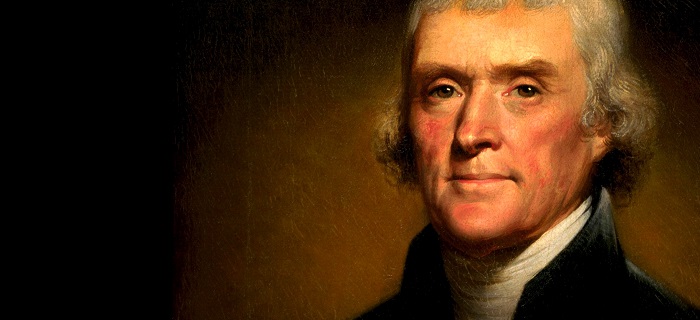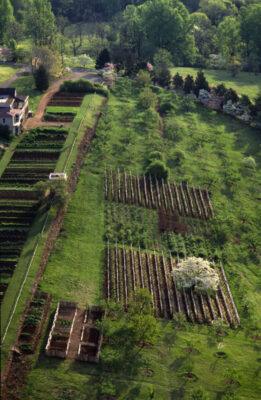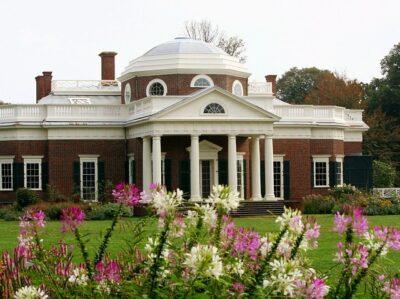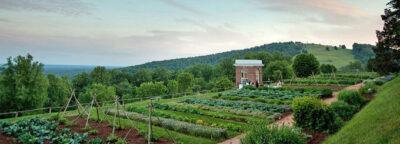When they consider Thomas Jefferson, many Americans first think of him as the author of the Declaration of Independence or as our nation’s third president, who was responsible for the Louisiana Purchase and the Lewis and Clark expedition. However, Jefferson’s contributions go deeper than those accomplishments.
Jefferson was a true Renaissance man with a variety of interests and hobbies. He was an accomplished architect, an inventor and a violinist. He could read more than five languages. Jefferson also was a horticulturist who made important contributions to American gardening.
In a letter to Charles W. Peale in 1811, Jefferson wrote, “No occupation is so delightful to me as the culture of the earth, and no culture comparable to that of the garden. … But though an old man, I am but a young gardener.”
At Monticello, his beloved Virginia estate, Jefferson became a pioneer of gardening practices that are useful for us today. Always passionate about growing things, Jefferson further developed this interest during a diplomatic trip to England in 1786 with his long-time friend John Adams.
Need Non-GMO Seeds? Get Them From A Company You Can Trust!
During the two-month trip, he was able to tour and examine many English gardens. Those observations became the basis for his own extensive gardening ideas. Much of what he learned can be applied to any garden of any size.
Here are five examples of Thomas Jefferson’s gardening wisdom.
1. Experiment … extensively
Jefferson once wrote that the “greatest service which can be rendered to any country is to add a useful plant to its culture.” When he traveled throughout our young country and abroad, Jefferson often exchanged seeds and seedlings with other gardeners. He enjoyed cultivating those seeds and young plants in his Monticello garden.
Because he grew a variety of crops, including a mix of tropical species with cool weather crops, he devised a unique terraced landscape for his 1,000-foot-long vegetable garden. By placing the garden on a south-facing slope, he was able to capture abundant sunshine.
Creating this unique form of “hanging garden” involved the removal of about 600,000 cubic feet of red clay and the creation of a 1,000-foot-long rock wall that was 15-feet tall in some places.
2. Grow what you eat
Jefferson loved to eat vegetables. In fact, he wrote that “they constitute my principal diet.” Because of his extensive travels, he was exposed to a wide variety of cuisines. He frequently took recipes back home with him and encouraged his cooks to use Monticello’s homegrown produce in new ways. In this way, he created a new American type of cuisine he described as ‘half-French and half-Virginian.”
His Monticello garden featured 330 different varieties of vegetables and 170 varieties of fruits. According to Monticello gardening expert Peter Hatch, Jefferson’s garden inspired a “revolutionary cuisine.” A Monticello recipe for okra soup, for instance, reflects influences from Native Americans (lima beans), Europe (potatoes and tomatoes) and Africa via the West Indies (okra).
Karen Hess, a noted culinary historian, called Jefferson “our most illustrious epicure, in fact, our only epicurean President.”
3. Go natural
Jefferson would be quite at home with the organic gardening movement of today. When his daughter, Martha, wrote to him while he was in Philadelphia serving as secretary of state, she complained about insects damaging the vegetables at Monticello.
He responded, “I suspect that the insects which have harassed you have been encouraged by the feebleness of your plants; and that has been produced by the lean state of the soil.”
He recommended the garden be covered that winter with “a heavy coating of manure. When is rich it bids defiance to droughts, yields in abundance, and of the best quality.”
In 2009, White House chef Sam Kass reserved a section of the White House garden to showcase Jefferson’s Tennis Ball and Brown Dutch lettuce, Prickly-Seeded spinach and Marseilles fig, a few of Jefferson’s favorite plants.
4. Keep notes
Jefferson had a scientist’s mind, and because of that, he kept scrupulous notes about what worked and what did not work in his garden.
Seamazing: The Low-Cost Way To Re-mineralize Your Soil
He recorded his gardening efforts in his Garden Book, a personal journal he maintained from 1766 to 1824. Hatch reports that Jefferson was not afraid to admit defeat in certain gardening circumstances. “On one page in 1809 the word failed is written down 19 times,” Hatch writes. “He had a holistic view, as we say today, of the gardening process. It is the failure of one thing that is repaired by the success of another.”
In his “A General Gardening Calendar,” Jefferson’s only published horticultural work, he offered a monthly guide for kitchen gardening. In the calendar, which was first published in 1824 in the American Farmer, a Baltimore periodical, Jefferson instructs gardeners to plant a thimble spool of lettuce seed every Monday morning from February 1 through September 1.
5. Make your garden an area for retreat
Jefferson enjoyed the restorative aspects of being a gardener and believed that gardens should be seen, experienced and enjoyed.
For example, he designed and built an octagonal pavilion in a central garden location at Monticello and used this spot as a location for reading, writing and even entertaining.
“No occupation is so delightful to me as the culture of the earth,” he once wrote, “and no culture comparable to that of the garden.”
Have you been to Monticello? What other “Jefferson advice” would you add? What do you remember about his garden? Share your thoughts in the section below:
Sources:
https://www.monticello.org/site/house-and-gardens/historic-gardens
https://www.monticello.org/site/house-and-gardens/jefferson-scientist-and-gardener
https://www.masshist.org/thomasjeffersonpapers/garden/
A Rich Spot of Earth: Thomas Jefferson’s Revolutionary Garden at Monticello, a book by Peter Hatch
Bust Inflation With A Low-Cost, High-Production Garden. Read More Here.
 Off The Grid News Better Ideas For Off The Grid Living
Off The Grid News Better Ideas For Off The Grid Living







